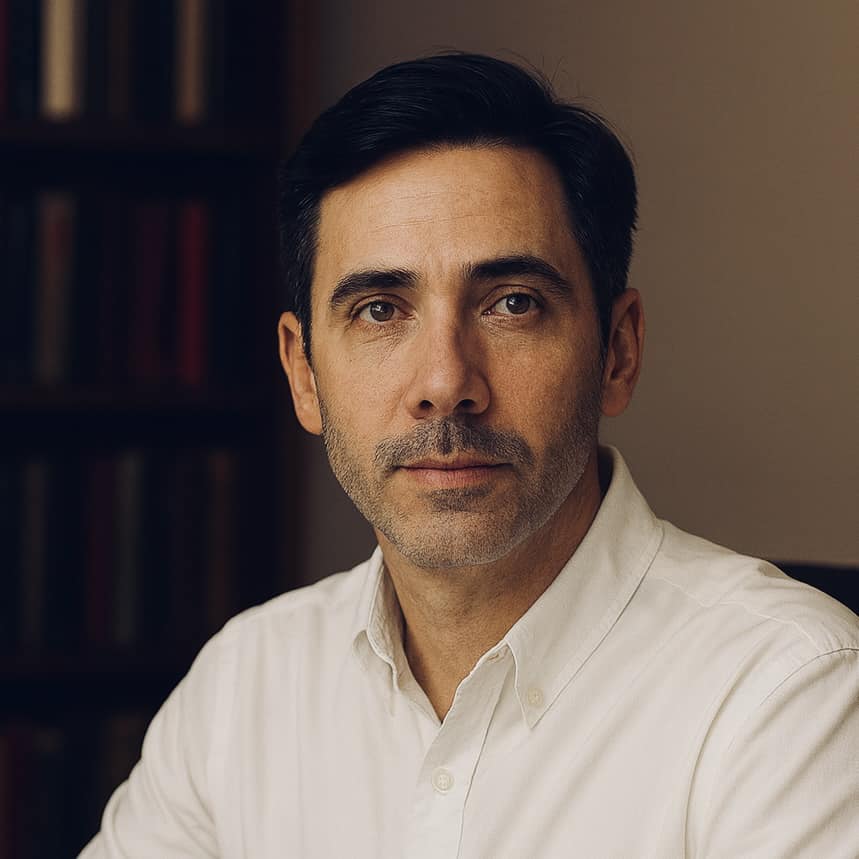Personal Development
Personal development is a core concept in modern psychology and philosophy, defined as the continuous process of improving oneself across physical, mental, intellectual, social, and spiritual dimensions to realize one’s fullest potential. As scholars such as Maja Djikic note, personal development is not merely the pursuit of individual success, it is also a pathway for people to seek harmony and meaning in life, especially as the world undergoes rapid change driven by globalization, technology, and socioeconomic crises. In today’s society, where competitive pressures are intensifying, personal development has become a key factor that helps individuals adapt to shifting environments, enhance their quality of life, and achieve lasting happiness. According to the World Health Organization (WHO), personal development plays an important role in reducing stress and improving mental health, with more than 264 million people worldwide facing depression due to a lack of self-development skills.
The importance of personal development is further underscored by globalization, where cultures intersect and influence one another. Globalization brings opportunities as well as challenges, requiring individuals to be flexible and to adapt to cultural, economic, and social diversity. Personal development models from different cultures offer varied tools for meeting these changes. For example, while many Western models emphasize individual goals and performance measurement, Asian approaches often focus on inner harmony and continuous improvement. Research in positive psychology shows that applying these models can strengthen resilience and creativity, enabling individuals to move through setbacks and attain life balance.
The aim of this research essay is to introduce and analyze representative personal development models and methods from different cultures around the world, highlighting cultural diversity, practical applicability, and ways these approaches can be integrated in contemporary contexts. The essay will explore how cultural, religious, and social factors shape the formation and use of these models, while assessing their strengths, limitations, and the challenges of applying them in different settings. The scope centers on models from major regions: the West (the United States and Europe), Asia (Japan, India, China), Africa (South Africa and traditional tribes), Latin America, and other regions (including Denmark and Indigenous Amazonian practices). Drawing on academic literature from sources such as JSTOR, Google Scholar, and articles from Frontiers in Psychology, the essay adopts a comparative approach to clarify cultural differences and the potential for integration.
This essay will incorporate qualitative and quantitative research, including analyses of classical and contemporary theories as well as real-world case studies. Personal development is not only an individual process, it is also shaped by the social environment, calling for a synthesis of traditional and modern models. Cloverlogy is a comprehensive framework that offers readers a practical lens for applying personal development principles in everyday life.
Theoretical Overview of Personal Development
The theoretical foundations of personal development often stem from humanistic and positive psychology, with core frameworks such as Maslow’s Hierarchy of Needs. This theory depicts development as a pyramid that begins with basic physiological and safety needs like food and security, then progresses to social belonging and esteem, and culminates in self-actualization. Maslow argued that only when basic needs are satisfied can individuals move toward higher levels of growth; his framework has become the basis for many modern models and is widely applied in education and management. However, Maslow also maintained that self-actualization is not an endpoint but an ongoing process requiring self-awareness and personal effort.
Alongside Maslow, Deci and Ryan’s Self-Determination Theory (SDT) emphasizes three basic needs: autonomy, competence, and relatedness. According to SDT, personal development occurs when these needs are met, fostering intrinsic motivation and life satisfaction. Research in articles on PMC indicates that SDT is particularly useful for explaining development in early adulthood, when individuals face major life events such as graduation or migration. In addition, Bandura’s Social Learning Theory highlights the role of modeling and self-efficacy, arguing that personal development arises not only from within but also through observing and learning from others.
Cultural differences play a significant role in shaping approaches to personal development. In the West, where individualism is prominent, models often prioritize independence, personal goals, and performance metrics, as seen in the work of Maslow and Covey. In contrast, in Asia, where collectivism is more prevalent, personal development is intertwined with social harmony, ethics, and relationships, as reflected in Confucianism and Buddhism. Comparative research in Frontiers in Education shows that students in the UK and Hong Kong approach independent learning differently due to cultural influences, with East Asian learners placing greater emphasis on perseverance and community. In Africa, the Ubuntu philosophy stresses “I am because we are,” viewing personal development as part of the community, which contrasts with Western individual-centric approaches.
Religious and social factors also exert deep influence. For example, Buddhism in Asia encourages mindfulness as a path to enlightenment, while Christianity in the West emphasizes forgiveness and divine purpose. A key challenge in personal development theory is universality: can Western models be applied across other cultures? Studies in Sage Journals point to cultural differences in how people conceive of personal growth, with many in the East valuing gradual change over sudden breakthroughs. This overview lays the groundwork for analyzing specific models, underscoring the need for a multicultural approach to personal development.

Personal Development Models/Methods from Regions Around the World
Western Models – Focus on the United States and Europe
The West, especially the U.S. and Europe, is the source of many personal development models grounded in psychological science and management, emphasizing practicality, measurement, and the individual.
Stephen Covey’s classic framework, The 7 Habits of Highly Effective People (1989), proposes seven habits: be proactive, begin with the end in mind, put first things first, think win–win, seek first to understand then to be understood, synergize, and sharpen the saw. This model applies not only at work but also in personal life, helping people move from dependence to independence and collaboration. Research from AACSB indicates that using this model in business education promotes effective leadership and personal growth.
The SMART goal-setting method (Specific, Measurable, Achievable, Relevant, Time-bound) emerged from corporate management and helps individuals set concrete goals and track progress. For example, instead of “I want to be healthy,” a SMART goal is “run 5 km three times a week for three months.” Widely used in coaching and education, this approach is supported by studies showing it boosts motivation and success.
Abraham Maslow’s theory of Self-Actualization, introduced in 1943, analyzes the hierarchy of needs and emphasizes that personal development peaks when individuals realize their creative and moral potential. Maslow’s hierarchy has influenced educational psychology, helping teachers design programs that support students in moving beyond basic needs toward self-actualization.
Carol Dweck’s Growth Mindset, described in Mindset: The New Psychology of Success (2006), contrasts with a fixed mindset and holds that abilities can be improved through effort. Research from Stanford shows students with a growth mindset handle setbacks better, and the concept is applied in education to encourage lifelong learning.
James Clear’s Atomic Habits (2018) focuses on small habits that create big change, with principles such as making habits easy and attractive. Grounded in behavioral science, this model is used in personal development to build a sustainable lifestyle.
Martin Seligman’s PERMA Model (2011) from positive psychology comprises Positive Emotion, Engagement, Relationships, Meaning, and Accomplishment to achieve lasting well-being. Studies show PERMA improves mental health in the workplace.
Gary Keller’s The One Thing (2013) encourages focusing on the single most important task to remove distractions and optimize productivity.
Asian Methods – Focus on Japan, India, and China
Asian models emphasize perseverance, spirituality, and harmony.
Kaizen (continuous improvement) from Japan, developed after World War II, centers on small daily improvements. Used in both business and personal contexts, Kaizen promotes sustainable progress, as illustrated in personal development guides and tutorials.
Meditation and Mindfulness from Indian Buddhism help regulate emotions and increase focus. Research on PMC shows mindfulness reduces stress and improves health.
Confucian philosophy from China stresses self-cultivation, lifelong learning, and ethics. Scholars note that Confucianism shapes personal development through balancing the individual with society.

African Approaches
The Ubuntu philosophy (“I am because we are”) from South Africa and other African communities focuses on communal connection, compassion, and personal growth through social relationships, emphasizing that individuals develop through the community. Traditional practices, such as coming-of-age rites among the Maasai or Zulu, illustrate how rituals like Enkipaata and Eunoto build inner strength and personal responsibility.
Latin American and Other Global Methods
Ikigai (“reason for being”) from Japan, now popular worldwide and influential in Latin America, combines passion, mission, vocation, and value to help people find life purpose. Hygge (everyday coziness and happiness) from Denmark focuses on life balance, relaxation, and family relationships to create a warm atmosphere. Indigenous practices such as Ayahuasca or Shamanism from the Amazon (Brazil/Peru) discuss spiritual journeys and self-understanding through traditional rituals, fostering inner transformation.
Comparative Analysis and Practical Applications
The personal development models presented in this essay display substantial diversity in philosophy, approach, and objectives, clearly reflecting cultural differences across world regions. Although they share common threads, such as emphasizing inner balance and continuous growth, each model carries distinctive features shaped by its cultural, social, and religious context. Comparing these models not only clarifies their unique value but also opens opportunities for integration and application in today’s globalized world.
Comparison of the models
Similarities: Most models aim to improve quality of life and help individuals realize their potential. For instance, Stephen Covey’s 7 Habits (Western) and Japan’s Kaizen both highlight continuous improvement, even though their methods differ. Likewise, Martin Seligman’s PERMA and South Africa’s Ubuntu both emphasize social relationships as a core pathway to happiness and growth. Across models, self-awareness and intrinsic motivation are recognized as keys to progress, though they are interpreted differently depending on the culture.
Differences: Western models, such as SMART, Growth Mindset, and The One Thing, tend to center on individualism, prioritizing personal goals, performance metrics, and productivity. They are science-driven, practical, and often applied in competitive settings like business or education. For example, SMART requires goals to be specific and time-bound, aligning with Western contexts where success is defined by measurable outcomes. In contrast, Asian models such as Kaizen and mindfulness meditation focus on long-term sustainability, inner harmony, and spirituality. Kaizen encourages small, continuous improvements and fits collectivist cultures that value patience and harmony. Similarly, African models like Ubuntu emphasize community, holding that individuals develop through their connection to the group, an emphasis that contrasts with the Western focus on the individual. Methods such as Hygge (Denmark) or Ayahuasca (Amazon) prioritize emotional balance and spiritual experience; they are highly personalized but place less emphasis on measurable effectiveness.
Strengths and limitations
Strengths:
- Western models (7 Habits, SMART, Growth Mindset, PERMA, The One Thing, Atomic Habits) fit competitive environments where individuals need clear targets and quick results. For example, research from Harvard Business Review indicates that SMART and The One Thing can improve performance in multinational organizations where time and efficiency are critical. Growth Mindset, widely adopted in education, helps students move through failure and sustain motivation.
- Asian models (Kaizen, meditation, Confucianism, Ikigai) support long-term sustainability and are well suited to individuals or organizations seeking steady development and inner balance. Kaizen has been successfully applied at companies like Toyota, demonstrating effectiveness in continuous performance improvement. Mindfulness meditation, supported by studies on PMC, reduces stress and improves mental health, especially in high-pressure societies.
- African models (Ubuntu, coming-of-age rituals) offer unique value for building community and social responsibility. Ubuntu has been used in reconciliation programs in South Africa after apartheid, fostering unity and personal growth through the collective.
- Latin American and other models (Hygge, Ayahuasca) emphasize emotional and spiritual experience, appealing to individuals seeking deeper meaning in life. Hygge has become a global trend, encouraging relaxation and family connection.
Limitations:
- Western models can lack long-term depth if they overemphasize short-term results. For example, SMART may overlook emotional or spiritual aspects when measurement is the sole focus.
- Asian models can be less flexible in fast-changing environments because they emphasize patience and gradualism. Although effective, Kaizen may not suit industries that require disruptive innovation.
- African approaches like Ubuntu can be difficult to apply in individualistic cultures where personal benefit is prioritized over the collective.
- Approaches such as Hygge or Ayahuasca may be seen as too subjective, with insufficiently clear structures for widespread adoption in professional settings.

Practical applications
In a globalized context, combining these models offers strong potential to meet diverse personal development needs. For example, a case study from a multinational company in Germany showed that integrating Kaizen with SMART improved both productivity and employee motivation. Employees were encouraged to set SMART goals (e.g., increase sales by 10% in six months) while applying Kaizen to refine daily work processes, leading to sustainable gains. In education, Growth Mindset has been paired with mindfulness meditation in schools in the U.S. and India, helping students reduce stress and enhance learning through positive thinking and focused attention.
Technology also plays a key role in applying these models. Apps like Headspace and Calm support mindfulness practice, while tools such as Trello integrate SMART methods for personal goal management. However, technology brings challenges: overreliance on apps can reduce autonomy in personal growth. Research in positive psychology notes that excessive use of digital tools can weaken the direct, lived experience at the heart of methods like Hygge or Ayahuasca rituals.
Challenges
A major challenge is the cultural barrier when applying external models. For example, implementing Ubuntu in Western corporate environments can be difficult because priorities for the individual and the collective differ. Similarly, spiritual practices like Ayahuasca may be misunderstood or rejected in cultures unfamiliar with Indigenous traditions. Globalization can also lead to simplification or commercialization that strips models of their original cultural meaning – Hygge, for instance, has sometimes been reduced to a consumer trend in the West.
To overcome these challenges, a flexible approach is needed, adapting models to fit local contexts. For example, training programs in parts of Asia have integrated SMART with Kaizen, creating hybrid models that are both practical and sustainable. Research from Sweden and India suggests these hybrids can be especially effective in multicultural environments where employees come from varied backgrounds.
The comparative analysis of personal development models reveals a rich spectrum of approaches, from scientific to spiritual, from individual to communal. Effective real-world application calls for thoughtful integration that leverages each model’s strengths while mitigating its weaknesses through cultural adaptation and wise use of technology. In a globalized world, these models not only help individuals grow but also promote cross-cultural understanding and collaboration, paving the way for deeper research on how to apply them in education, business, and mental health care.
Conclusion
The personal development models and methods presented, from Western approaches like the 7 Habits, SMART, and Growth Mindset to Asian approaches such as Kaizen, mindfulness meditation, and Confucianism; from Africa’s Ubuntu to other regional practices like Ikigai, Hygge, and Ayahuasca, demonstrate a wide range of pathways for enhancing individual potential and quality of life.
Whether individual, communal, or spiritual in nature, these models offer valuable tools for adapting to a globalized world where rapid change demands flexibility.
Readers are encouraged to combine methods that fit their personal context – for example, using SMART to set work goals, mindfulness meditation to reduce stress, or Ubuntu to strengthen community relationships.
Within this context, Cloverlogy, a personal development platform, is introduced as a comprehensive model that integrates four core pillars: Well-being, Inner Self, Relationships, and Finance. This model synthesizes values from global approaches and provides practical guidance for achieving a life of freedom and happiness.
Future research should explore how artificial intelligence (AI) and globalization influence personal development, particularly the integration of hybrid models to meet multicultural needs. AI applications, such as tools that support mindfulness, are opening new possibilities, while also raising challenges around personal autonomy and cultural meaning.
References
- Clear, J. (2018). Atomic Habits: An Easy & Proven Way to Build Good Habits & Break Bad Ones. Avery.
- Covey, S. R. (1989). The 7 Habits of Highly Effective People: Powerful Lessons in Personal Change. Simon & Schuster.
- Dweck, C. S. (2006). Mindset: The New Psychology of Success. Random House.
- Keller, G., & Papasan, J. (2013). The ONE Thing: The Surprisingly Simple Truth Behind Extraordinary Results. Bard Press.
- Maslow, A. H. (1943). A theory of human motivation. Psychological Review, 50(4), 370–396.
- Ryan, R. M., & Deci, E. L. (2000). Self-determination theory and the facilitation of intrinsic motivation, social development, and well-being. American Psychologist, 55(1), 68–78.
- Seligman, M. E. P. (2011). Flourish: A Visionary New Understanding of Happiness and Well-being. Free Press.












